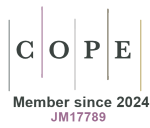Analysis of the budgetary impact of alemtuzumab as second-line therapy, compared to natalizumab and fingolimod, in patients previously treated with interferon beta 1b, diagnosed with active relapsing-remitting multiple sclerosis, treated in the Costa Rican social security fund
DOI:
https://doi.org/10.33393/grhta.2019.467Keywords:
Multiple sclerosis, indirect comparison, Interferón, natalizumab, fingolimod, alemtuzumab, Budget ImpactAbstract
Aim: To assess the budget impact of the introduction of alemtuzumab in second-line treatment of active relapsing remitting multiple sclerosis (RRMS) patients, previously treated with interferon beta 1b, compared with natalizumab and fingolimod, from the Costa Rican Social Security (C.C.S.S.) perspective, with a time horizon of 5 years. Methods: A budget impact analysis (BIA) with a time horizon of five years was designed, considering the different percentages of administration of drugs used and forecasted by the Costa Rican Social Security (C.C.S.S.) to treat active RRMS, comparing the scenario of a base case, in which the first-line treatment with interferon beta 1-B S.C. and second-line treatments (fingolimod and natalizumab) are in place, against the alternative scenario with the introduction of alemtuzumab is included. The evaluation of the costs (in United States dollars, August2nd, 2016) (1) included most of direct medical resources (medication management, disease management, visits, diagnostic tests), excepting concurrent treatments. Unit costs were taken from the records of the C.C.S.S., specifically the Tariff Model Health Insurance First Half 2016 (2) and the Supply Management Information System (SIGES) (32). Both the National Clinical Practice Guidelines for the Treatment of Multiple Sclerosis (3),and RAND/UCLA methodology applied to an expert medical panel (4) were used to obtain the local resources used in the management of the disease. Additionally, regarding Budget Impact Models, a search and summary of evidence in PubMed database was performed (5). Finally, the ISPOR check list was selected for the evaluation of this work (6). Results: Considering a cohort of 118 patients with active RRMS, the mean global budget impact per five years would be $20.167.456USD$ in the base case and $19.644.090 USD$ in the scenario with alemtuzumab. The setting that includes alemtuzumab decreases the budget impact in 2,59% ($4.183USD$ per patient at 5 years). Pharmacological costs were the key drivers of total cost (82 %). Conclusion: The introduction of alemtuzumabrepresents a significant budgetary saving over the next five years. Higher benefits by reducing relapses, and a very manageable short-term regimen in most patients, allow recommending, both clinically and economically, the progressive and rational use of the product in this context.










